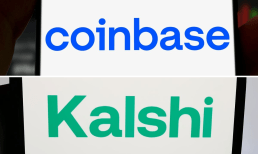Zuckerberg doubled down during the company’s Oct. 26 earnings call, making clear that metaverse spending will not only continue apace, but will grow, even though its Reality Labs division has lost more than $9 billion in the first three quarters of 2022 — putting it on track to lose $12 billion to $15 billion this year.
In Meta’s earnings announcement wake, the company’s stock plunged another 24%, extending its year-long slump to more than 70% leading to Zuckerberg being called “tone-deaf” by “disgusted” institutional investors, the Financial Times (FT) reported. As much as his personal fortune has taken a huge hit too, the 38-year-old billionaire still controls 54% of Meta’s voting power so is unlikely to be swayed by conflicting outside opinions.
Despite having produced nothing more than some very pricy and feature-rich headsets and the Horizon Worlds virtual reality (VR) platform that included widely-derided low quality graphics, Meta has little else to show for its investment and corporate re-branding from Facebook.
All Together Now
However, investors aren’t the only ones concerned with Meta spending, which if it leads to a viable metaverse could give the platform and its combined 3.6 billion users of Facebook, Instagram and WhatsApp overwhelming influence over how the broader metaverse and Web3 develops.
Advertisement: Scroll to Continue
The Open Metaverse Alliance, or OMA3, formally launched Wednesday (Nov. 2) with the goal of creating “a metaverse without restraining walls, where individual platforms are interconnected and fully interoperable,” and digital assets and personal data are controlled by individuals not corporations.
That’s what a blockchain-based, privacy-focused Web3 would look like more or less if it comes into being. In some versions of Web3, it is a series of connected metaverses.
To pursue that interoperability, OMA3 will soon be launching open source standards that will seek to make sure various digital assets like non-fungible tokens (NFTs) work across metaverses, Decrypt reported.
Minting Meta NFTs
In any blockchain-based metaverse, and likely in some built on other technologies, NFT holding media ranging from artwork and music to avatars will be an important tool for transporting digital assets from one to another.
So, it’s notable that Meta, which has begun embracing NFTs on both Instagram and Facebook, announced Wednesday that it is getting into the sales side of the industry.
Instagram users will now be able to mint, sell and display NFTs (or digital collectables) built on the Polygon blockchain, a leading Ethereum competitor. That will make it far cheaper to mint them.
The service is a way for people to “support their favorite creators by buying their digital collectibles directly,” Meta said.
Sales Down but Interest Remains Strong
Those digital collectables will be salable and resalable both on Instagram and other NFT marketplaces, Meta said. That effectively puts the company in the NFT sales business, although becoming a competitive marketplace is likely a way off.
In other NFT news, sales dropped another 25%, Decrypt reported. And the NBA Top Shots’ collection of replay video moments led the way down, selling just $2.7 million in the secondary resale market in October, down from $59 million in January and $224 million in February 202,. At that time, it helped move NFTs into the mainstream consciousness, and remains the best-selling collection by volume, with more than 20 million sales and resales.
Not that brands are pulling back from their NFT obsession. Fortnite, a massively multiplayer online (MMO) game that’s becoming a non-blockchain metaverse, revealed Monday (Oct. 31) that it has reached a deal that would allow Ralph Lauren’s Polo collection to offer digital apparel and accessories for players’ avatars. Fashion brands, including top designers, have been piling into metaverses, seeing digital fashion sales as a potentially new income stream.
For all PYMNTS crypto coverage, subscribe to the daily Crypto Newsletter.




